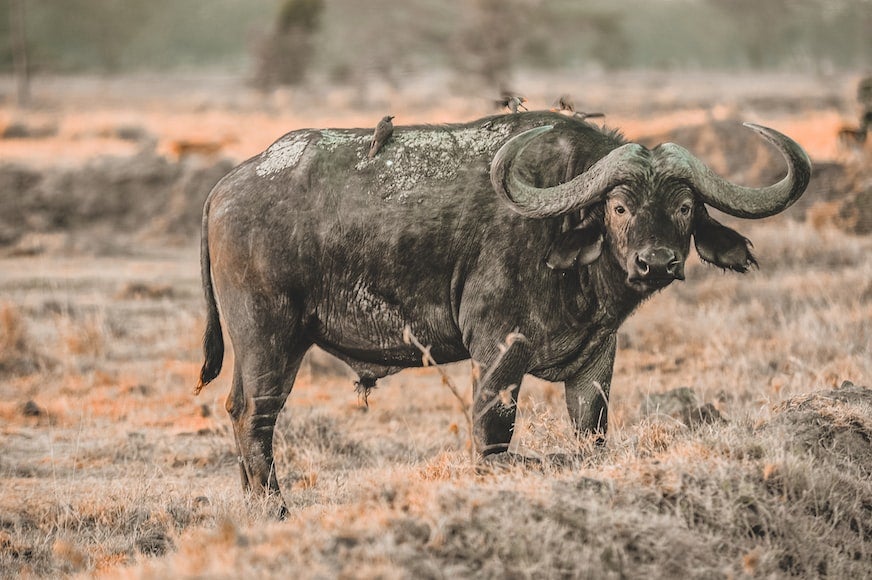Human-wildlife conflict rife in Zimbabwe’s Chipinge region
Expansion of settlements into previous wildlife-only zones sees increase in deadly animal encounters

Your support helps us to tell the story
From reproductive rights to climate change to Big Tech, The Independent is on the ground when the story is developing. Whether it's investigating the financials of Elon Musk's pro-Trump PAC or producing our latest documentary, 'The A Word', which shines a light on the American women fighting for reproductive rights, we know how important it is to parse out the facts from the messaging.
At such a critical moment in US history, we need reporters on the ground. Your donation allows us to keep sending journalists to speak to both sides of the story.
The Independent is trusted by Americans across the entire political spectrum. And unlike many other quality news outlets, we choose not to lock Americans out of our reporting and analysis with paywalls. We believe quality journalism should be available to everyone, paid for by those who can afford it.
Your support makes all the difference.By Nokuthaba Dlamini for The Standard Zimbabwe
Uncontrolled settlements that are mushrooming along Zimbabwe’s Save Valley Conservancy have been blamed for an explosion in wildlife conflicts in Chipinge district, leading to the deaths of many villagers.
The Save Valley Conservancy, located in the Lowveld in the southeast, is one of the largest private game reserves in Africa.
It consists of privately-owned, government-owned and community-owned wild animal sanctuaries.
The land reform programme that began in 2000 saw the sprouting of new settlements around the reserve and the Green Institute (GI), an environment protection lobby group operating in the region, says the uncontrolled settlements are having deadly consequences.
On August 7, Kushinga village under Chief Musikavhanhu was plunged into mourning after Rafuni Chauke, 33, was gored to death by a buffalo as she was walking home from her fields.
Chauke’s death particularly alarmed the community because she was the second person to be killed by buffaloes in Wards 30 and 4 this year.
“Chauke and two female villagers were walking from the fields at around 10am when one of the buffaloes charged at them, leading to her death,” GI director Blessing Matasva told The Standard.
“Five days after the incident, three other women were also attacked by the same animal although they narrowly escaped and people in the area are still traumatised.
“Distress calls, some resulting in fatalities, are being reported by women in villages such as Mahenye and they are not only being threatened by buffaloes alone, but lions and elephants as well.”
Matasva said their research showed that the worsening human wildlife conflict in Chipinge was caused by a population explosion around the Save Valley Conservancy where villagers ended up clearing land to build homes and for agriculture purposes in areas previously reserved for wildlife.
“For fuel and timber, community members harvest wood from available forests or woodlots, thus destroying food sources for herbivorous animals and suppressing animal herds, leading to both herbivores and carnivores encroaching into human settlements,” he said.
“Vandalism of game reserve perimeter fences, unsatisfactory responses by the responsible authorities and growth in animal population also contribute to the rise in human wildlife conflict.”
Matasva said areas between Birchenough and Mahenye were the worst affected by the human wildlife conflict due to their proximity to the Save Valley Conservancy.
He said frequent droughts due to climate change, deforestation and a growth in populations of animals such as elephants also fuelled human wildlife conflicts.
In May, government spokesperson Nick Mangwana said 60 Zimbabweans had been killed by elephants since the beginning of the year and 50 were injured.
Mangwana said elephants killed 72 people in 2021 and he blamed the increasing deaths on the elephant overpopulation in Zimbabwe.
The country has over 100 000 elephants, which is the world’s second-largest population after Botswana and about one quarter of the elephants in all of Africa.
Matasva said many areas in Chipinge were seeing dangerous wild animals encroaching into homes.
“In the past three years, there have been reports of wildlife ‘trespassing’ into communities and causing havoc on people’s properties and lives,” he said.
“The most common animals causing havoc in Chipinge are elephants, lions, buffaloes and hyenas.
“Climate change has left the valley of Chipinge experiencing severe droughts which reduce the availability of animal food, resulting in wildlife seeking alternative food sources like humans, crops and livestock outside of protected areas.
“As an organisation operating in this area we feel there is need for an urgent intervention before many people lose their lives and livelihoods.
“We believe as community actors in Chipinge district that an urgent solution to human wildlifeconflicts should be found.”
Cornelius Chauke from Mahenye said Zimbabwe Parks and Wildlife Management Authority(Zimparks) officials often did not respond on time to reports of problem animals, leaving villagersvulnerable.
“The situation in our communities has become very dangerous,” Chauke said. “Wild animalsdestroy our crops during the farming season and they also destroy irrigation schemes.”
Zimparks spokesperson Tinashe Farawo did not respond to requests for a comment on the complaints by the Chipinge villagers, but the authority is on record saying that the unsustainable elephant population growth was fuelling human wildlife conflicts in the country.
The government says it is exploring many options to control the elephant population, including culling.
This article is reproduced here as part of the African Conservation Journalism Programme, funded in Angola, Botswana, Mozambique, and Zimbabwe by USAID’s VukaNow: Activity. Implemented by the international conservation organization Space for Giants, it aims to expand the reach of conservation and environmental journalism in Africa, and bring more African voices into the international conservation debate. Read the original story here.
Join our commenting forum
Join thought-provoking conversations, follow other Independent readers and see their replies
Comments